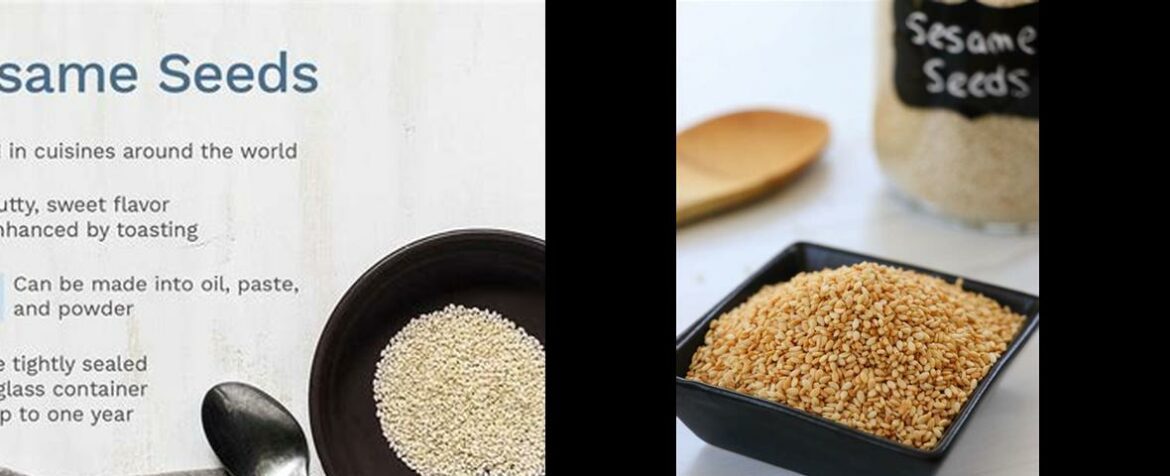What do sesame seeds taste like: Are you curious about the taste of sesame seeds? Well, get ready to have your taste buds tantalized as we delve into the flavorful world of these tiny seeds. Whether you’ve sprinkled them on a salad or enjoyed them in your favorite Asian dishes, sesame seeds have a distinct taste that is both nutty and earthy. In this blog post, we’ll explore the unique flavor profile of sesame seeds and answer all your burning questions. So, sit back, relax, and let’s uncover the deliciousness of sesame seeds together!
What Do Sesame Seeds Taste Like?
Sesame seeds, tiny edible seeds derived from the sesame plant, have been a culinary staple for over 5,000 years. Their versatility extends across diverse cuisines, from South Asian to Mediterranean, adding a distinctive nutty flavor and delightful crunch to various dishes. But what exactly do sesame seeds taste like? Let’s delve into the unique flavor profile of these tiny powerhouses.
A Nutty Symphony
At their core, sesame seeds possess a mild, sweet, and nutty flavor. This inherent nuttiness is often described as akin to almonds, with a delicate hint of earthiness. When consumed whole, they offer a satisfying crunch that adds textural interest to dishes. To further enhance their nutty character and aroma, toasting or baking sesame seeds is a common practice, intensifying their flavor and making them more noticeable in culinary creations.
Color Variations, Flavor Nuances
While sesame seeds generally share a nutty flavor profile, subtle variations exist depending on their color. Black sesame seeds, often used in Chinese cuisine, are known for their more substantial, richer flavor. This darker variety exhibits a less sweet, more savory character compared to its lighter counterparts. White sesame seeds, the most popular variety in the United States, retain a milder, sweeter flavor profile.
Rancidity: A Bitter Note
It’s important to note that rancid sesame seeds can develop an unpleasant, bitter taste. This undesirable flavor is an indication of spoilage and should be avoided. Fresh sesame seeds, properly stored, should not exhibit any bitterness.
Culinary Versatility: From Savory to Sweet
The culinary applications of sesame seeds are vast and varied. They frequently grace savory dishes as a garnish, adding a nutty crunch and visual appeal. In Chinese cuisine, sesame seeds are often used as a coating, creating a crispy exterior that tantalizes the taste buds. In the United States, sesame seeds are a common ingredient in crackers, salad dressings, soups, rice dishes, and hamburger buns. Their versatility extends beyond savory realms, as they also find their way into sweet treats like cookies, pastries, and croissants.
Beyond the Seeds: Tahini and Sesame Oil
Sesame seeds also play a pivotal role in creating two beloved culinary staples: tahini and sesame oil. Tahini, a paste made from ground sesame seeds, is an essential ingredient in hummus, baba ghanoush, and various marinades. Sesame oil, derived from pressing sesame seeds, is prized for its high fixed oil content and resistance to high heat, making it a preferred choice for Asian cooking and stir-frying.
Storing Sesame Seeds for Optimal Freshness
To maintain the freshness and integrity of sesame seeds, proper storage is crucial. Store them in an airtight container, ensuring a cool, dry, and dark environment. At room temperature, sesame seeds can retain their quality for up to 3 months. For extended storage, refrigeration is recommended, where they can last for up to six months. Freezing sesame seeds in an airtight container is also an option, preserving their freshness for up to a year.
Conclusion: A Culinary Gem
Sesame seeds, with their distinct nutty flavor, versatility, and nutritional benefits, are a culinary treasure. Whether sprinkled as a garnish, used as a coating, or incorporated into delectable sauces and oils, sesame seeds elevate dishes with their unique flavor and texture. From savory creations to sweet indulgences, sesame seeds continue to captivate taste buds worldwide.
FAQ about Sesame Seeds Taste
Q: What do sesame seeds taste like?
A: Sesame seeds have a mild, sweet, and nutty flavor, often compared to almonds with a hint of earthiness.
Q: How can I enhance the nutty flavor of sesame seeds?
A: To intensify the nutty character and aroma of sesame seeds, you can toast or bake them before using them in culinary creations.
Q: Do different colored sesame seeds have different flavors?
A: Yes, there are subtle flavor variations depending on the color of sesame seeds. Black sesame seeds have a richer, more savory flavor, while white sesame seeds have a milder, sweeter flavor.
Q: Are sesame seeds versatile in cooking?
A: Yes, sesame seeds are incredibly versatile and can be used as a garnish, coating, or incorporated into sauces and oils to add a unique flavor and texture to dishes.
Q: Are sesame seeds a popular ingredient?
A: Yes, sesame seeds have been a culinary staple for over 5,000 years and continue to captivate taste buds worldwide with their distinct flavor and nutritional benefits.
Q: Can sesame seeds go bad?
A: Yes, sesame seeds can go rancid over time, which can result in a bitter taste. It is best to store them in an airtight container in a cool, dark place to maintain their freshness.


